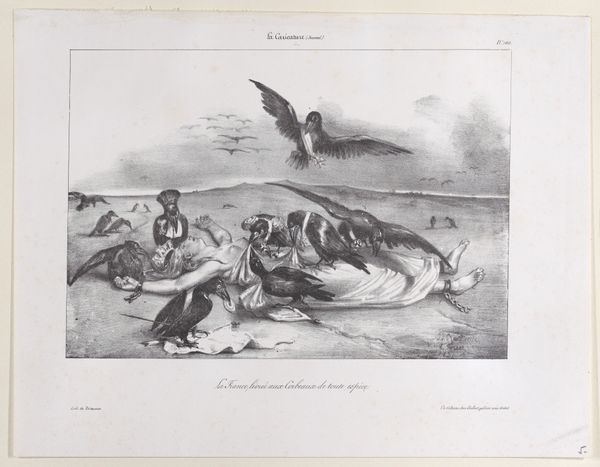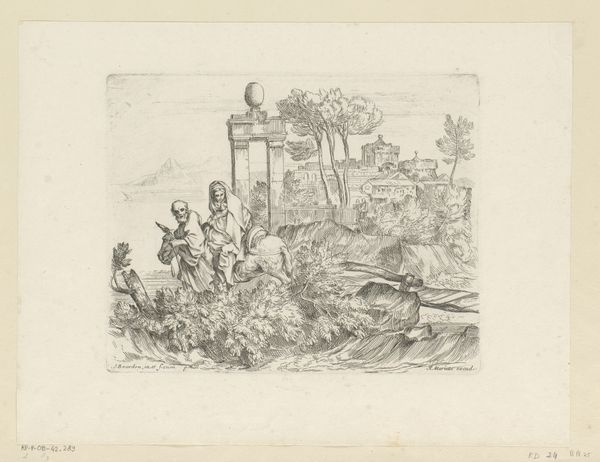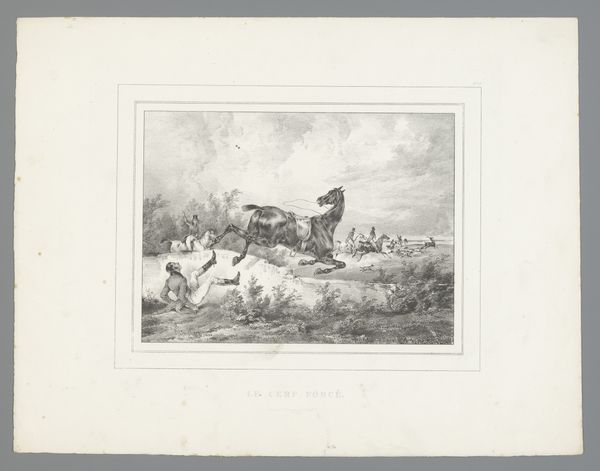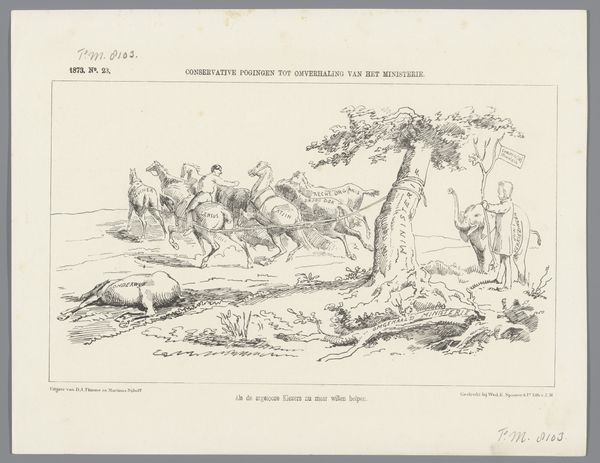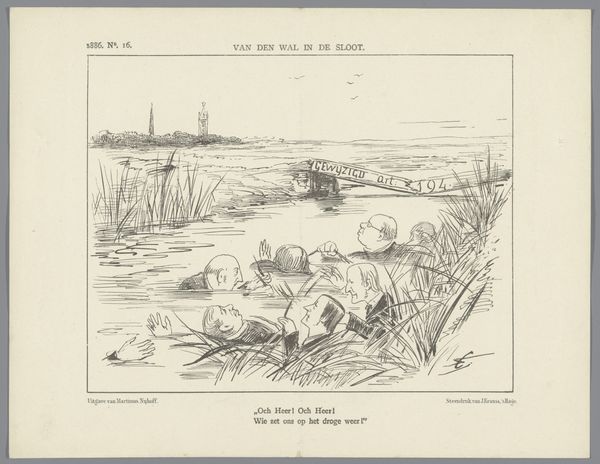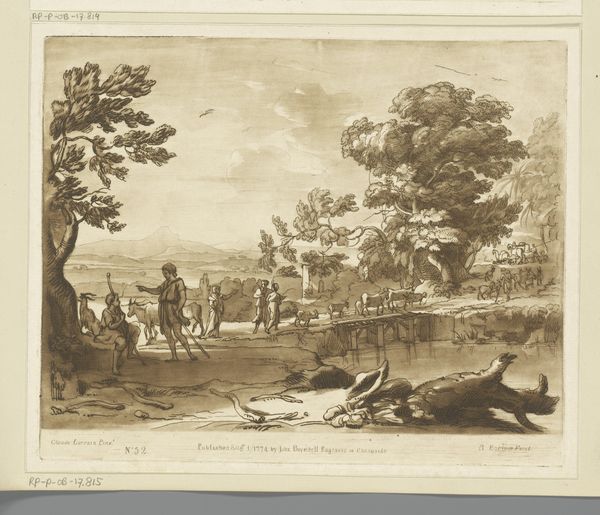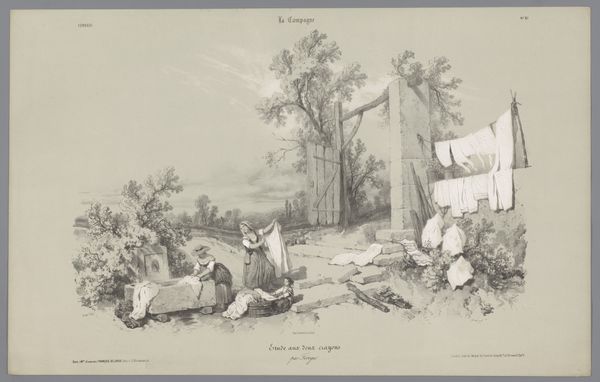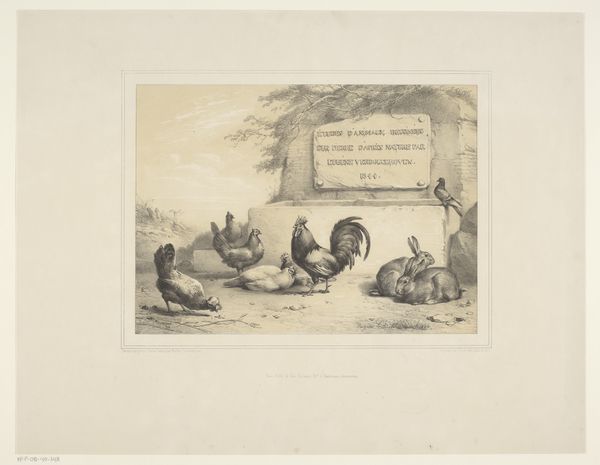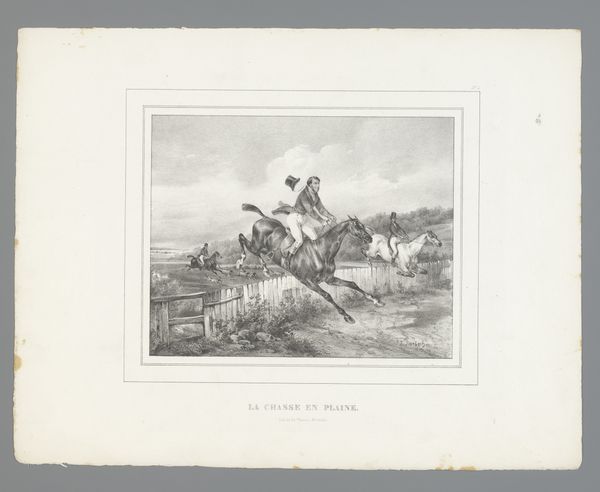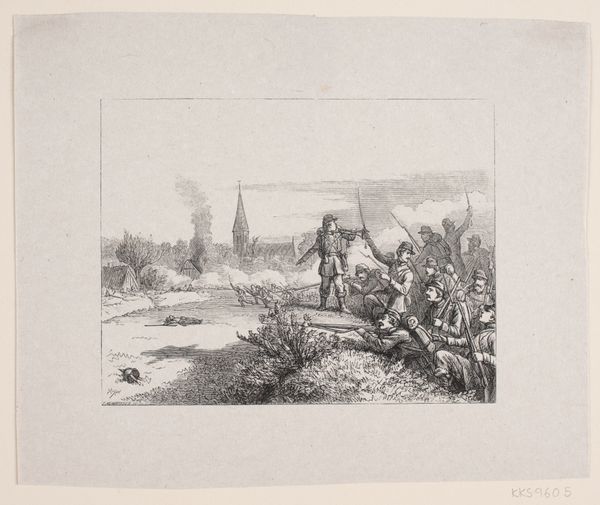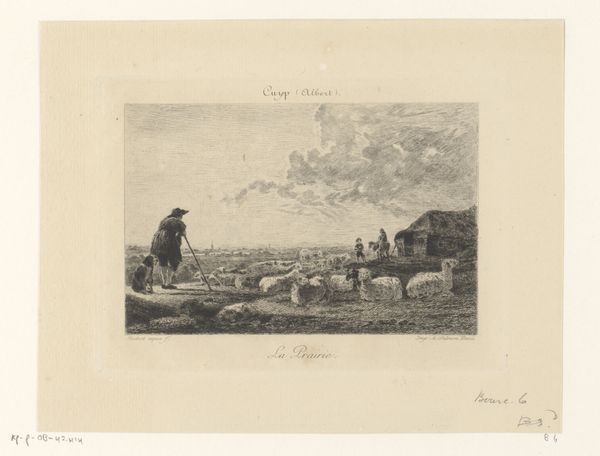
drawing, graphic-art, lithograph, print, paper, pen
#
portrait
#
drawing
#
graphic-art
#
narrative-art
#
lithograph
# print
#
impressionism
#
caricature
#
paper
#
pen
Dimensions: height 215 mm, width 275 mm
Copyright: Rijks Museum: Open Domain
Curator: What strikes me immediately about this print is the sheer number of bodies strewn across the landscape. It’s bleak and rather hopeless, wouldn't you say? Editor: Indeed. The work is titled "Political Cartoon, 1885" by Johan Michaël Schmidt Crans, rendered with pen, lithograph, and ink on paper. It presents us with a stark depiction of a social ill, and the use of mass production techniques makes it clear that it was intended for a wide audience. Curator: Mass production meets mass unemployment it would seem. Looking at the figures, sprawled under the sparse trees, there's a passivity, almost a resignation. Are they meant to represent all of the working class, do you think? What socio-political event did Schmidt Crans wish to depict with his caricature? Editor: I see these slumped postures in relation to 19th-century modes of production. Consider the Industrial Revolution’s impact, which transformed labor and living conditions. This image speaks directly to that transformation – it’s not just about representing the working class; it's about showing the physical and mental impact of labor precarity in relation to these means of mass production. The pen, the lithograph, the print run itself is intrinsically bound up in representing this struggle. Curator: A powerful argument. Thinking about labor beyond the depicted scene draws in a perspective of social power. The artist himself, the printers... their labor shapes and disseminates this image, making visible the plight of the unemployed and raising essential questions about how these conditions affected politics in that era. The perspective really shines when you think about it this way. Editor: Exactly. This graphic art shows how printed materials allowed to the political participation, and that gives them the capacity to show injustice, raising debate around societal and social justice and, of course, hopefully to effect lasting political change for the most vulnerable. Curator: Thanks for shifting my thinking and focusing it on the working conditions which created a fertile ground for such prints to become popular at that time. Editor: It's essential to view this print as an artifact produced through a specific social and material framework; and thanks for tying this materiality and making of art into the bigger context of its social environment and for underlining the long-lasting impacts that labor relations and the means of productions has had for decades!
Comments
No comments
Be the first to comment and join the conversation on the ultimate creative platform.

